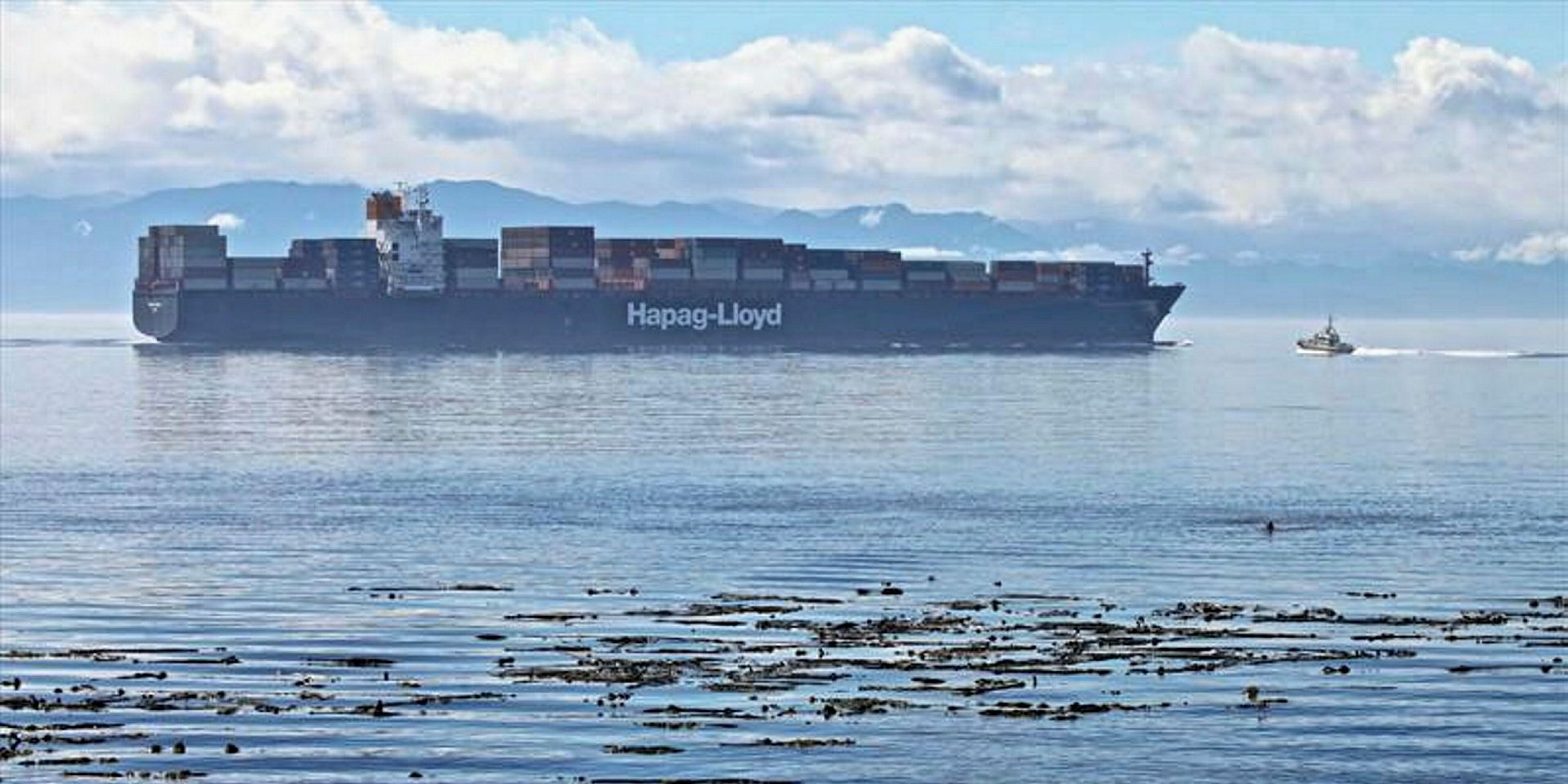A team of German accident investigators suspect a container filled with coconut charcoal may have triggered one of the container shipping industry’s worst fires last year.
Its findings are likely to be seen as an important contribution the containership operators' ongoing battle to end a series of cargo related fires on large size containerships that have run up huge costs and delays over recent years.
Containers in forward section of the 7,150-teu Yantian Express (built 2002) caught fire in the North Atlantic a days sailing from its destination, the Canadian port of Halifax, on 3 January last year.
The fire appeared to originate in the forward section of the Hapag-Lloyd box ship around hold number two. It took nearly three weeks for fire fighters to extinguish the blaze, which caused extensive damage to the ship and destroyed cargo in holds number one and two.
The findings of Germany's Federal Bureau of Marine Casualty Investigation (BSU) indicate the cargo in question was misdeclared which contributed to the fire starting.
The BSU investigation into the cause of the fire focused on cargo hold number two bay 12.
After ruling out potential sources of the fire, including containers filled with wooden furniture, tires and clothing, the investigators focused in on a cargo declared as coconut pellets in container UACU5272502.
The BSU concluded that the cargo was not actually coconut pellets but coconut charcoal, also known as pyrochar. Coconut charcoal is used in shishas and in barbequing.
The coconut charcoal cargo onboard the Yantian Express roughly weighed around 22,150 kg.
The cargo's owner declined to respond to questions from the BSU but the investigators managed to source the cargo back to Ho Chi Min City.
The BSU said that the cargo is known to be prone to self-combust which sugests that it is the most likely cause of the blaze. “According to the cargo documents, it (the suspect container) was loaded with coconut pellets. Both when the container was opened and based on items of cargo found on the deck and under the container, it became apparent it was actually pyrochar. Coconut-based pyrochar is characterised by the fact that it burns at a high temperature, between 600 degrees centigrade and 650 degrees centigrade, and produces a very low amount of smoke,” the BSU said.
The block of containers surrounding the coconut charcoal may have played a part in not allowing heat from the cargo to dissipate and causing it to self-heat further. The increasing temperatures eventually led the cargo to ignite the BSU suggested.
The BSU further suspects that the cargo may have been deliberately misdeclared to avoid the testing requirements of the International Maritime Dangerous Goods (IMDG) code which apply to pyrochar and other vegetable based charcoal.
But while BSU strongly suspects the coconut charcoal as the cause of the fire it admitted it does not have firm evidence.
“An outbreak of fire due to self-heating in a container loaded with pyrochar is considered most likely, as the possibility of a fire breaking out increases with the duration of transport,” the BSU said.
Following the fire, Hapag-Lloyd said it would fine any shippers misdeclaring dangerous goods aboard its fleet of containerships.
Since 15 September 2019 will said it will impose a $15,000 per container for misdeclaration of hazardous cargoes prior to shipment.
Hapag-Lloyd, the world’s fifth largest container line, said the move was in “the overall interest of safe operation onboard”.






